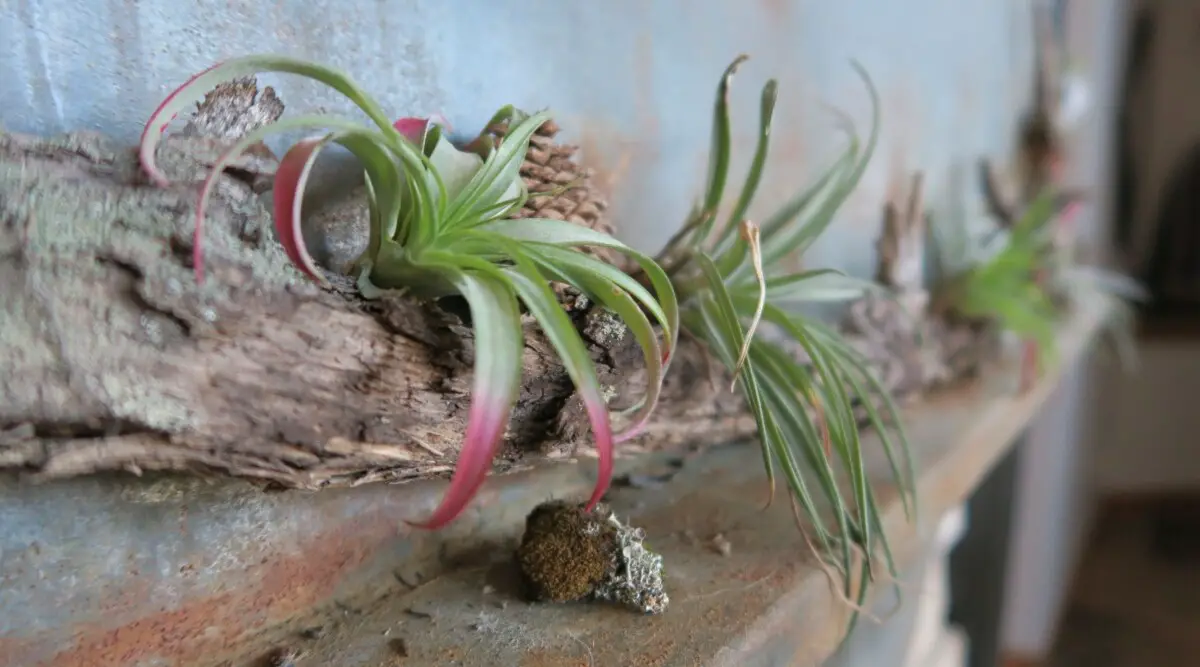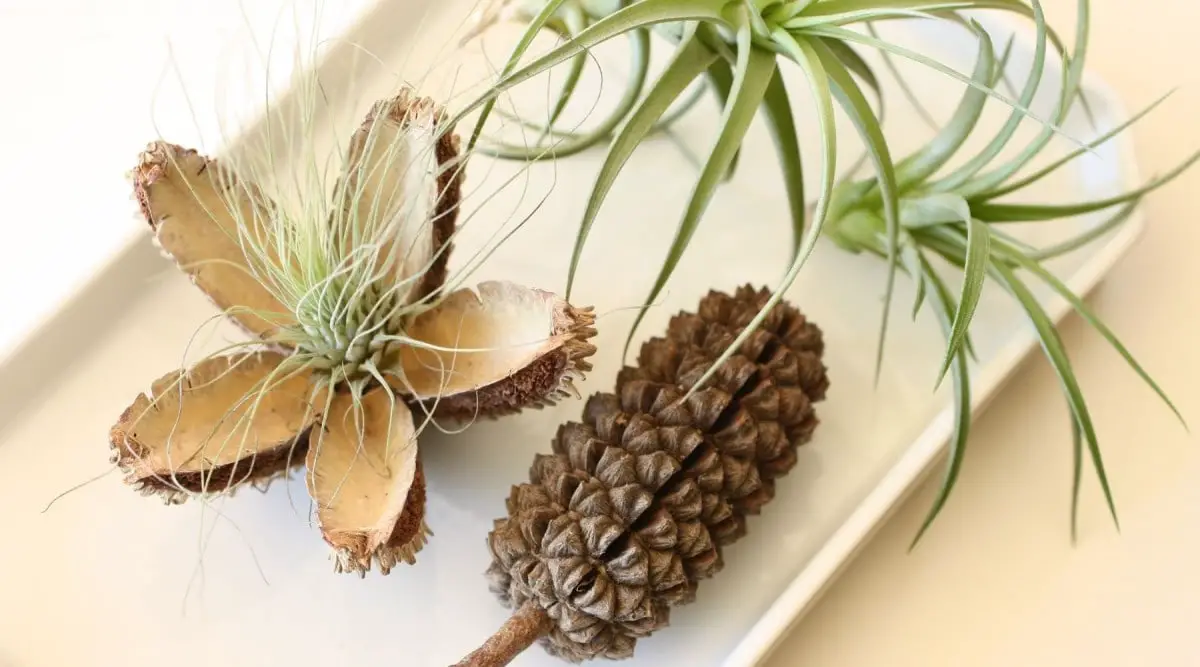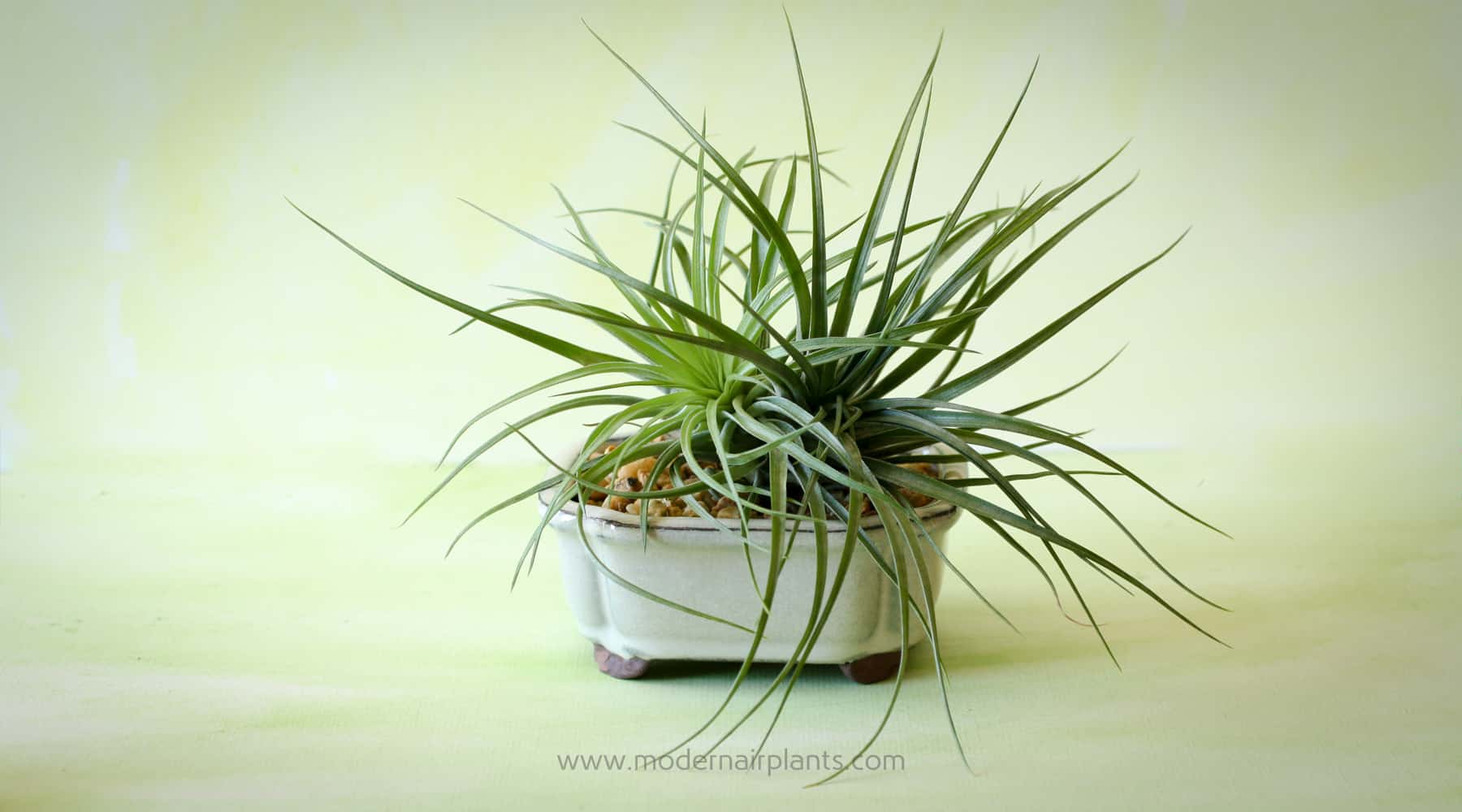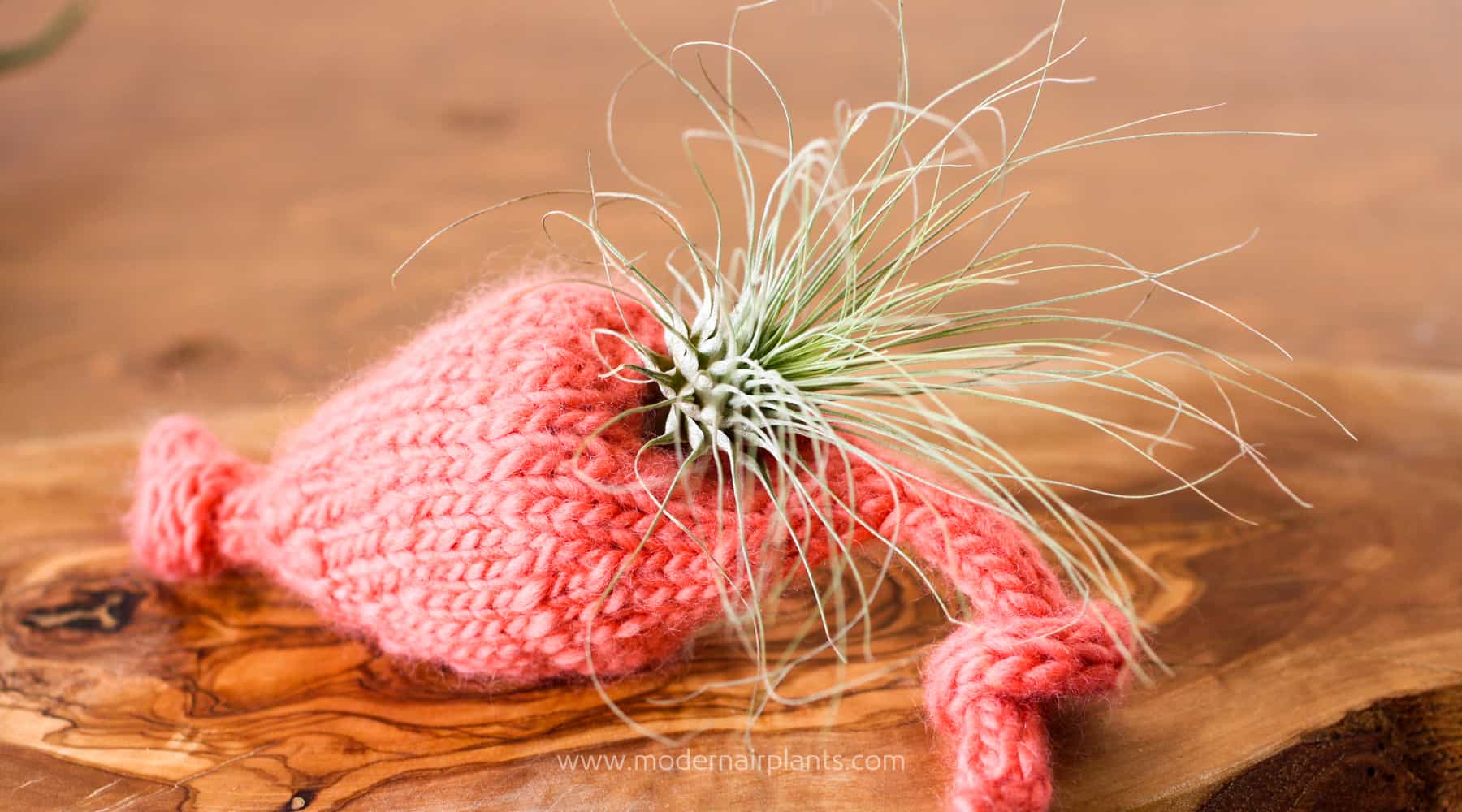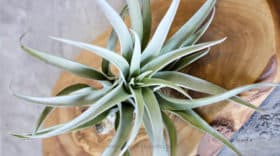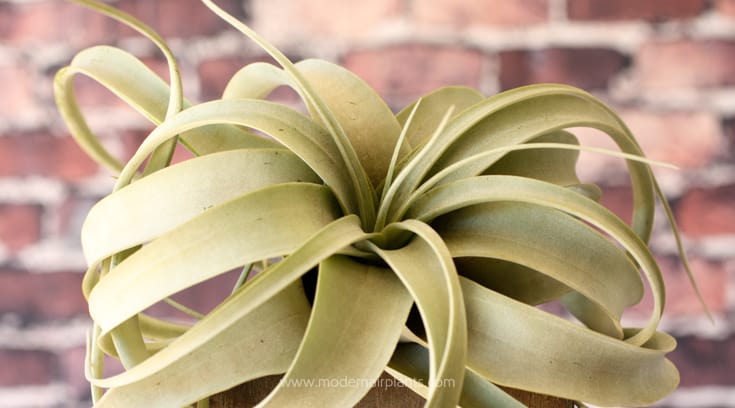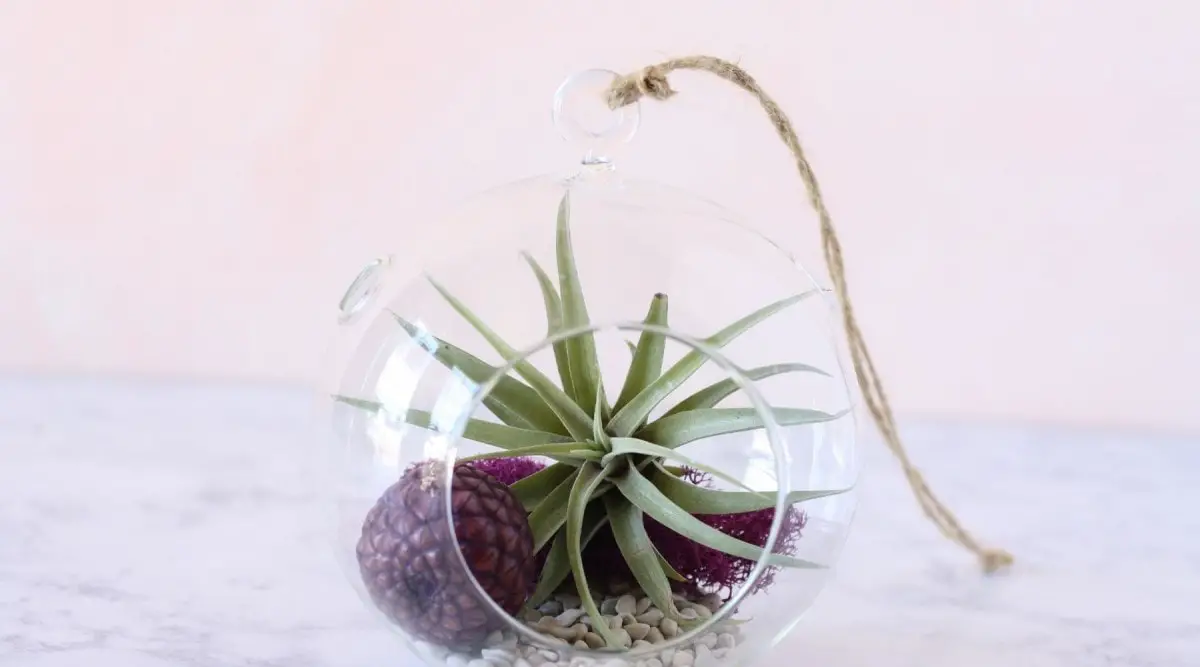
How to Grow Air Plants in Terrariums: The Complete Guide
Air plants are beautiful and low-maintenance plants that can bring life to any house. Watching them grow in a well-crafted terrarium is going to be your favorite new hobby.
This post may contain affiliate links, and I love all the products I promote.
To grow air plants in terrariums, first, you need to understand their needs. Then, choose the appropriate-sized air plants and prepare the terrarium with a base material and decorations. Put the air plant inside and find a proper place for the terrarium. Start caring for the plant and watch it grow.
Continue reading to get ideas about decorating your terrarium and find out more details about how to care for air plants.
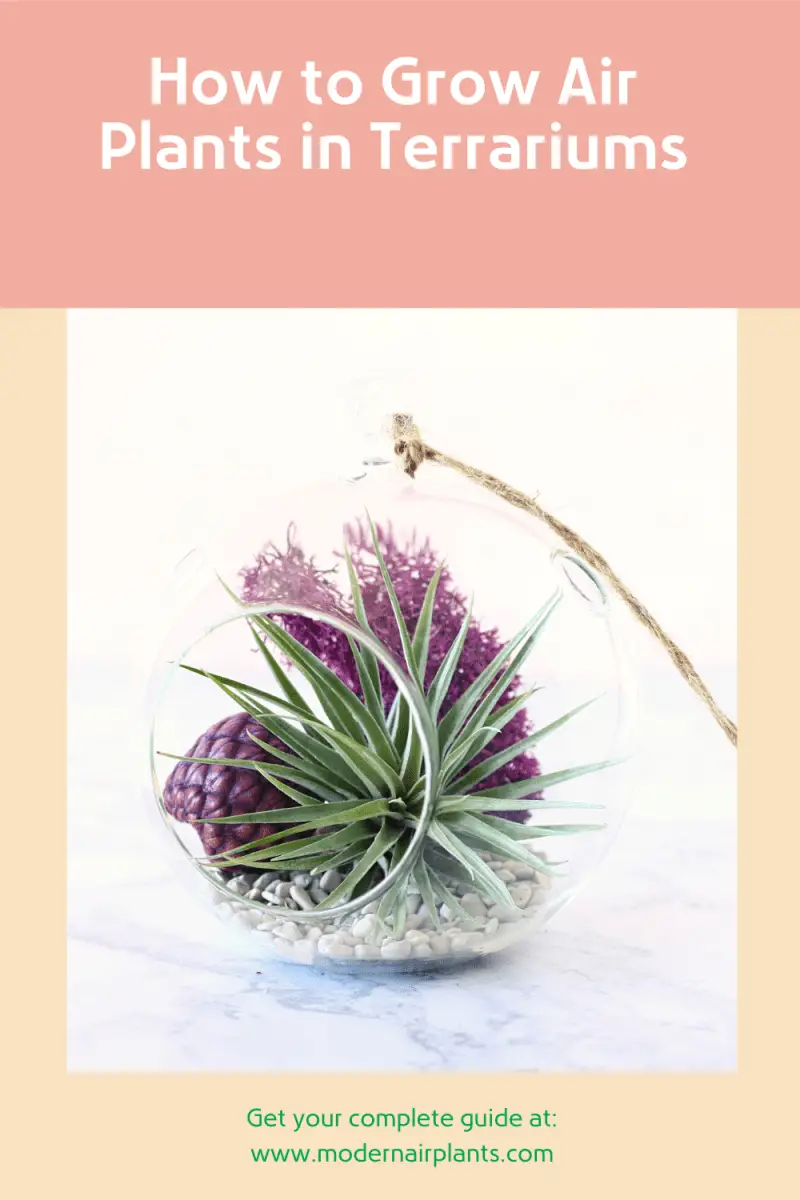
This post may contain affiliate links, and I love all the products I promote.
1- Understand Air Plants
Air plants or Tillandsia get their name because they rely on the air around them for food and nutrients. They have many tiny pores on their leaves, which lets them absorb the moisture in the air. They also absorb the water when it rains in the wild.
Air plants are non-parasitic epiphytes, which means they use their roots to attach themselves to tree branches, barks, rocks, and cliffs in nature, but they don’t steal their food and resources. Their roots have no other use, so they don’t need soil to grow—just air, sunlight, and water.
The amount of water and light they need depends on their types:
- A large number of air plants are Xerics. They come from drier areas where it rains less often. They also get more hours of daily light. They’ve evolved to store as much rainwater as possible through their leaves and consume it in prolonged droughts. You can identify Xeric types by looking at their fuzzy silver or white leaves. They look like they’re covered with a thin layer of dust.
- Other air plant species create the Mesic family. They belong in rainy, humid forests. The dense jungle usually doesn’t let them get much direct sunlight. Their leaves are shiny and smooth with brighter colors, ranging from green to red.
These two categories have slightly different environmental and care needs, as they’re used to different living conditions.
2- Choose the Right Air Plant Species
Thinking about how and where you want to grow your air plants is very important when choosing the appropriate species.
All air plants are small at first, but they’ll eventually grow. Some of them will become too big to be kept inside. Some will need larger containers and more space, but to maintain air plants inside a terrarium, you’ll need to choose the varieties that are small and stay small. Unless, of course, you just want to keep them in there for as long as they’re young.
Depending on the size of the terrarium, you can keep about three small air plants inside. Remember, they need space to grow, so you shouldn’t overcrowd the terrarium.
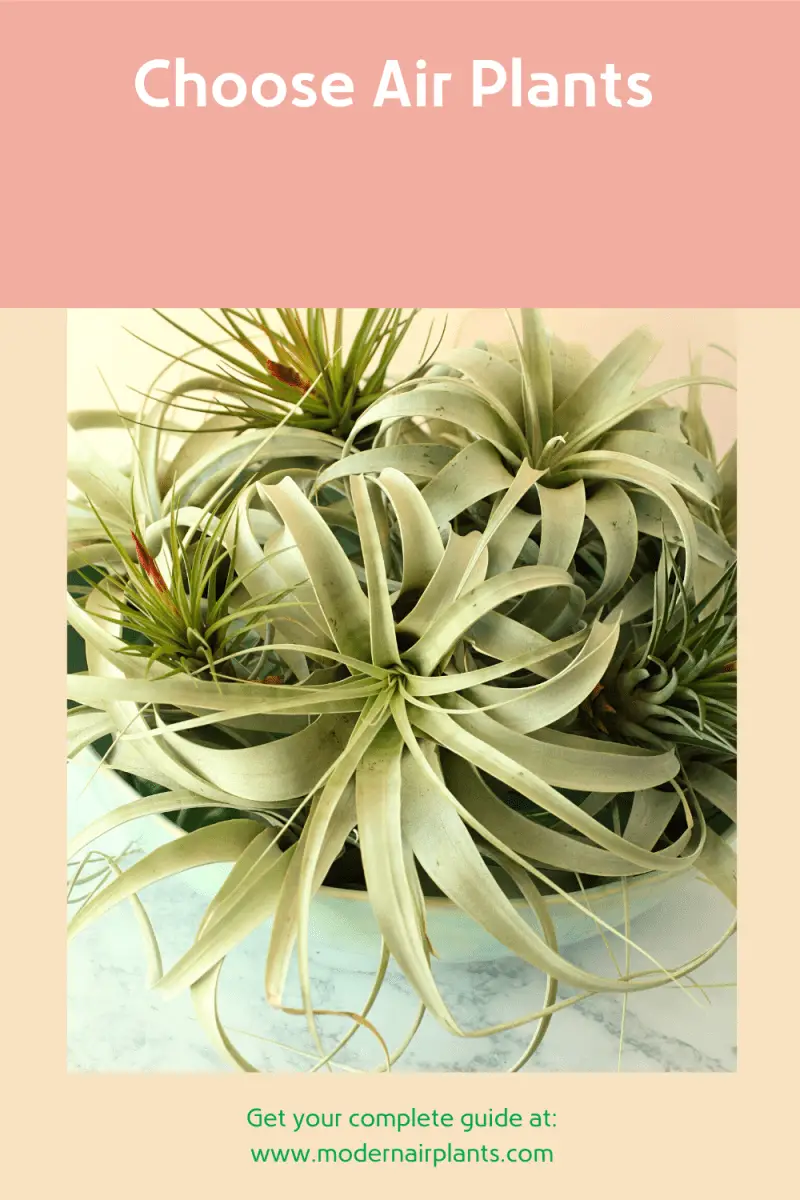
Here’s a list of the air plant species that stay relatively small:
- Tillandsia Ionantha Fuego: Fuego is the Spanish word for fire. This interesting air plant has leaves that start green from the base but slowly transition to red at the pick. Fuegos stay relatively small. They grow about one inch (2.5 cm) tall, making them a perfect fit for smaller terrariums.
- Tillandsia Ionantha Rubra: The Ionantha Rubra, also known as the “sky plant,” is a graceful and rare air plant. It grows up to 13 inches (33 cm) inside a terrarium. It has watermelon green and spiky leaves with a slight curl. Their leaves get a shade of red in the blooming season, and they produce beautiful blue and purple flowers.
- Tillandsia Ionantha Mexican: The Ionantha Mexican is a gorgeous air plant, especially during its blooming season. It initially has fuzzy green curved leaves, but it’ll produce tubular purple flowers, and the tips of the leaves will turn bright red. This species grows about one or two inches (2.5 or 5 cm) in size, and it’s very hardy.
- Tillandsia Ionantha Scaposa: The Scaposa air plant, also known as Kolbii, looks a lot like other Ionantha members, but its leaves grow more vertically. It has mint green, fuzzy leaves that blush red when it’s blooming and produce violet flowers. It grows up to 13 inches (33 cm) tall.
- Tillandsia Ionantha Guatemalan: This species looks much like the previous ones, but with more pointed leaves. They grow to about 13 (33 cm) inches.
- Tillandsia Argentea Thin: The Argentea Thin has various thin leaves coming out of its short stem, almost resembling pine cone leaves. The leaves are bright green, and the plant grows up to 3 (7.6 cm) inches. The flowers have a red and thin stem. The petals vary in color, from red and pink to purple.
- Tillandsia Tenuifolia: This air plant has spiky green leaves that curl when the plant is thirsty. Once it gets water, the leaves will regain their strength and straighten out. Tenuifolia develops a curve as it grows. It can reach 3 inches (7.6 cm) in size, with pink and violet blooms.
- Tillandsia Ionantha Albino (Druid): The Druid air plant has bright green leaves with a symmetric arrangement. The central leaves will turn bright yellow during the blooming season, and a beautiful white flower emerges from the center. They grow 24 inches (61 cm).
- Tillandsia Andreanna: This air plant species has wispy thin green leaves that spread in all directions. The plant has a round rosette shape and grows up to 4 inches (10.2 cm). It produces tubular red flowers that emerge from the center.
3- Pick Your Glass Vessel
Terrariums come in many shapes and sizes, including round, teardrop, pyramid, and metal-framed geometric shapes. If you want to put your terrarium on tables or stands, get the ones with flat bottoms. If you want to hang them, get one with a hook or rope.

The most important thing to consider is that air plants need airflow. The terrarium should have a big enough opening for proper ventilation, or else your air plants will start to rot.
Plus, the terrarium shouldn’t block the light, so clear glass works the best. Plastic containers will become cloudy and opaque after some time.
You can also repurpose fishbowls, regular bowls, and jars as containers for your air plant. Don’t close the lid, and make sure the plant has plenty of space to grow. Click here for Amazon links for air plant terrariums.
4- Do the Base
As air plants don’t need soil to grow, any base and substrate you choose to lay in the terrarium have an entirely decorative value. However, don’t use soil, even for decoration, because it absorbs moisture and passes it on to the air plant, causing it to rot.
You have various options for the base, including gravel, sand, recycled glass, moss, wood chips, bark, marbles, and so on.
Sand and gravel come in different colors and work best for terrariums with flat bottoms. They usually make terrariums too heavy to hang. It’s best to use moss, pieces of bark, or wood chips for a base for hanging terrariums.
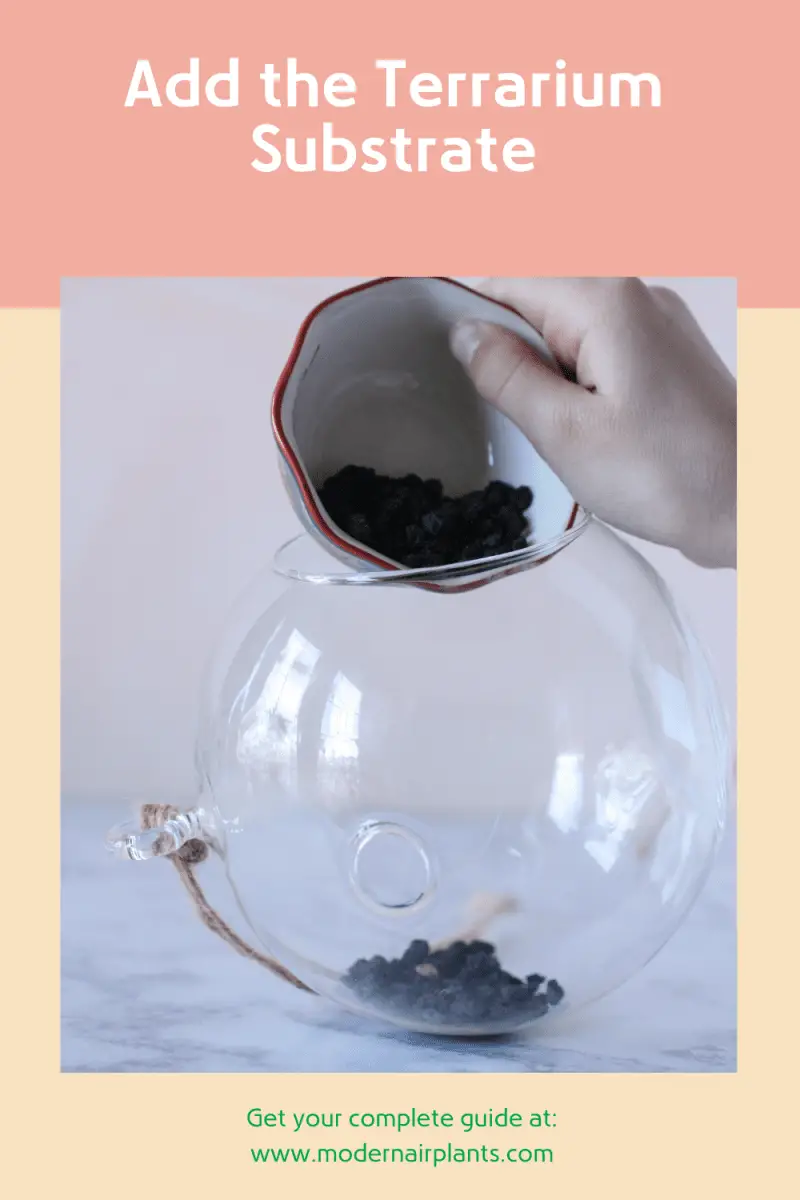
If you collect the sand, gravel, or wood from nature, make sure it’s pest-free. The best way to do so is by boiling it for a couple of minutes. Dry it before arranging it in the terrarium.
The amount of substrate you lay depends on the size of your terrarium, decorations, and air plants. For example, if you have big pieces of decorations or multiple air plants, you may have to lay a thin layer of sand or gravel. Make sure the air plant has enough space.
You can use a couple of moss pieces for decoration, and you can also make a moisture layer if your air plant is from the Mesic family. The plant shouldn’t sit in moisture, so the trick is to put a couple of stones where you want to place your air plant. This way, the moss layer will recreate rainforests’ humidity inside the terrarium without touching the air plant.
5- Decorate Your Terrarium
If you want to add some color to your terrarium, this is the time! You can buy or gather small pieces of driftwood for a jungle look. Be sure to boil them before use. Using seashells and urchins can give your terrarium a beach theme. Different colors and varieties of moss can be useful, including reindeer moss, sphagnum moss, or even fake moss.
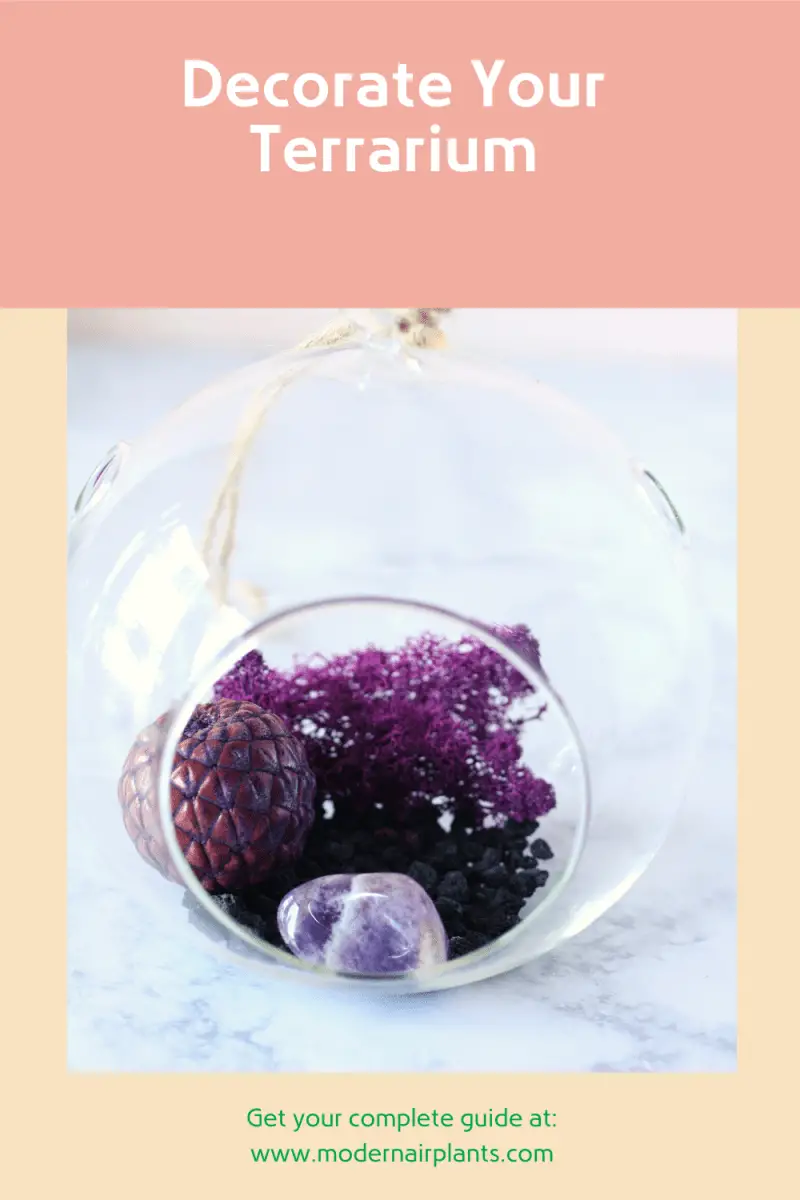
Creating a fantasy look in your terrarium can be a great idea, as well. Objects like small sculptures and toys can go in the terrarium, as long as it doesn’t cramp up space and is copper-free. Air plants are highly allergic to copper.
6- Place the Air Plant Inside
If you’ve just bought your air plants, it’s best to water them before putting them in their new home. Gently place them on the substrate after you’ve made sure they’re completely dry. Don’t try to push them into the gravel or sand. Make sure none of their leaves get pushed against the glass or decorations.

7- Secure the Air Plant
Some people decide to secure the plants by attaching them to the decorations. In most cases, that is unnecessary and even hazardous.
You won’t be able to remove the plants for watering and drying, so you’ll have to water them while they’re inside the closed vessel. Lack of airflow will create a damp environment inside the terrarium, and the plants won’t dry completely, resulting in an over-watered and sick air plant.
Moreover, when the temperature drops during the night, the moisture gets cold and causes the plant to rot.
If you have to attach the plant to a driftwood, rock, or decoration piece, a wire or fishing line is the best option since it’s reversible. However, don’t use copper wires, and make sure the decorations are copper-free. The metal tends to oxidize quickly in the presence of moisture, and the resulting oxide is dangerous.
Non-toxic glue is also an option. Click here for floral adhesive that doesn’t hurt air plants and is waterproof, and a silicone sealant is the next best option. Hot glue guns can also work, but they’ll come off as they’re not waterproof.
Spread the glue on the base of the plant and stick it to the object while pressing lightly. Don’t put glue on the leaves because they’ll eventually shed, and the plant will detach.
8- Find a Good Place for the Terrarium
Your air plant needs light and a steady temperature. Xeric varieties can tolerate a bit of direct sunlight, but keeping them in terrariums could be dangerous. The glass could have a magnifying effect and burn up the plants inside.
Put the terrarium within 1–3 feet (30.5–91.4 cm) of the south, west, or east-facing windows. You can also install a lamp within 1–2 feet (30.5–61 cm) from the terrarium. None of the air plant varieties can thrive in dim lighting.
Don’t put the terrarium near an air conditioning vent, a fireplace, or windows during cold winters. Air plants won’t survive in temperatures below 45°F (7.2°C). Their ideal temperature is between 60°F and 80°F (15°C and 25°C).
Put the terrarium somewhere with a low chance of being knocked over or broken. If it’s hanging, make sure your pets and kids can’t reach it.
9- Water the Air Plant
Although air plants get what they need from the air, our houses aren’t humid enough to give them enough water. Since they absorb water with their leaves, you can either mist them with a spray bottle, dunk them, or submerge them.
The Xeric varieties don’t need much water, and they prefer misting. Just make sure the water gets to all parts and curls. On the other hand, Mesic varieties can be dunked, misted, or submerged for 10–30 minutes.
Water the plants a couple of times a week, depending on their types. If you notice wrinkly or soft leaves, they’re thirsty.
Shake the plants after watering to get rid of the excess water. Hang them or put them upside down on a towel or cloth for a couple of hours. Put them back in the terrarium once they’re completely dry.
It’s best to water air plants in the morning rather than in the evening, so they’ll have enough time to dry in the sun.
Use room-temperature rainwater or tap water. Never use soft water because it either has no nutrients, or too much salt, which can hurt air plants.
If the air plant is attached to the terrarium, you have no choice but to mist it and hope it dries soon.
10- Take Care of the Air Plant
Other than light and water, house-kept air plants need to be fed from time to time. Dilute a soluble fertilizer with water every couple of months and use it like you regularly would water your air plants. Orchid, cactus, or bromeliad fertilizers work best in the long run. Make sure your fertilizer doesn’t contain copper, zinc, or boron.
Pruning air plants is easy. Just remove the old bottom leaves when they turn brown. You can cut the yellow leaves with shears or scissors or wait for them to turn brown. When cutting the leaves, be careful with the small pups that may be inside. If you cut them while they’re too young, they won’t be able to survive on their own.
It’s unlikely for your air plant to get infected with pests inside a terrarium. However, be prepared to take action immediately if it does.
Mealybugs are their most common pest. They form a white cotton-like substance on the leaves and eat from the plant’s juice. You can either try to flush the bugs with water or suffocate them by submerging the plant inside the water until they suffocate. If that didn’t work, use copper-free insecticides.
11- The Lifespan of an Air Plant
Air plants grow rather slowly when they’re young. Two or three years may pass before you notice any growth. Once they’re mature, they tend to get bigger a little faster. When they reach full maturity, they start to bloom. Their colors may change and produce beautiful and colorful flowers.
The next step is producing pups. Puppy plants or pups start to grow from the base of the mother air plant. Sadly, the original plant will slowly die a few weeks after blooming.
You can detach the pups when they’ve developed a few leaves and are one-third or half the size of the mature plant. You can also leave the pups until the original air plant dies, detach its brown leaves, and let the pups grow attached as a cluster.
Start caring for the pups the same way and watch the life cycle repeat all over again.
Conclusion
As you can see, caring for air plants is a pretty easy task. Even if you haven’t had much success with other plant varieties or have a busy schedule, you’ll have an easy time growing air plants.
Air plant terrariums make great decorations or gifts. You can amplify their beauty with a colored substrate and some tiny decorations. They can light up your home, office, or even the bathroom if you provide enough light and water. Having a beautiful terrarium on your table will definitely be a conversation starter!
Related Posts
Sources
- Gardener’s Supply Company: How to Grow Air Plants, Tillandsia
- Wikihow: How to Make an Air Plant Terrarium
- The Garden Glove: How to Make an Air Plant Terrarium to Display Your Plant Pets
- CraftyPlants: Growing airplants in Terrariums
- Kin Community Blog: How To Make An Air Plant Terrarium
- Decoist: Create An Unforgettable Air Plant Terrarium
- Fifth Season Gardening: Tillandsia: Care and display
- Air Plant Supply Co: TOP 10 SMALL AIR PLANTS
- The Spruce: 25 recommended air plants to grow indoors
- FTD by Design: 18 Types of Air Plants For Your Home
- The Spruce: Ideas for Plants in Terrariums
- Air Plant Design Studio: Choosing The Right Air Plant Terrarium
- Terrarium Planting Guide: An Ultimate Guide to Tillandsia or Air Plants Care

